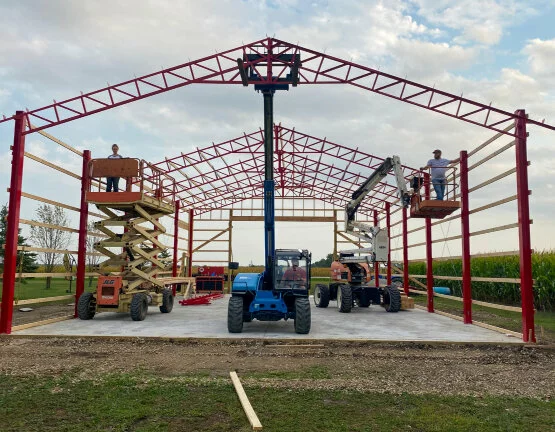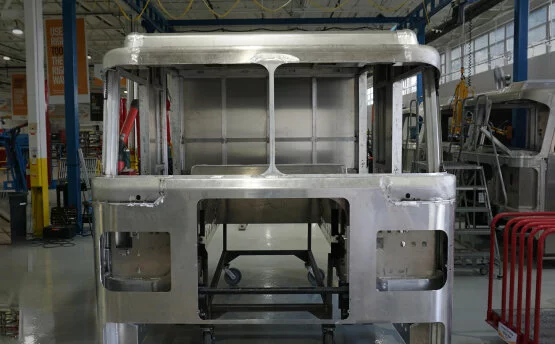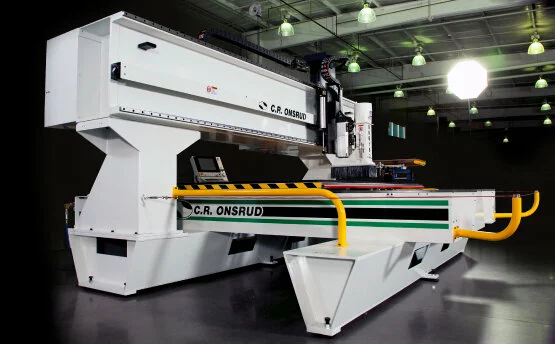Morbark
FROM TIMBER TO TRIUMPH:
Chipping Away at Manufacturing Challenges with Modular Innovation
We have a lot of part versions for our equipment and our volumes are constantly changing. So, in my mind, Bluco was a great fit because it’s highly versatile.
BRAD FREIBERG

Industry
Industrial Equipment

Challenge
High Mix Low Volume
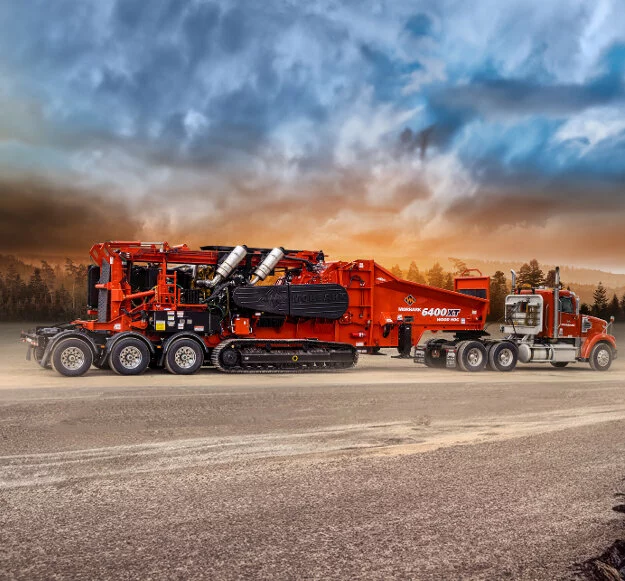
Company Profile
Morbark
Winn, MI
500+ employees
Wood Chippers
Challenges
Heavy Parts
Outdated Fixtures
Unused Positioning Assets
Frequent Design Revisions
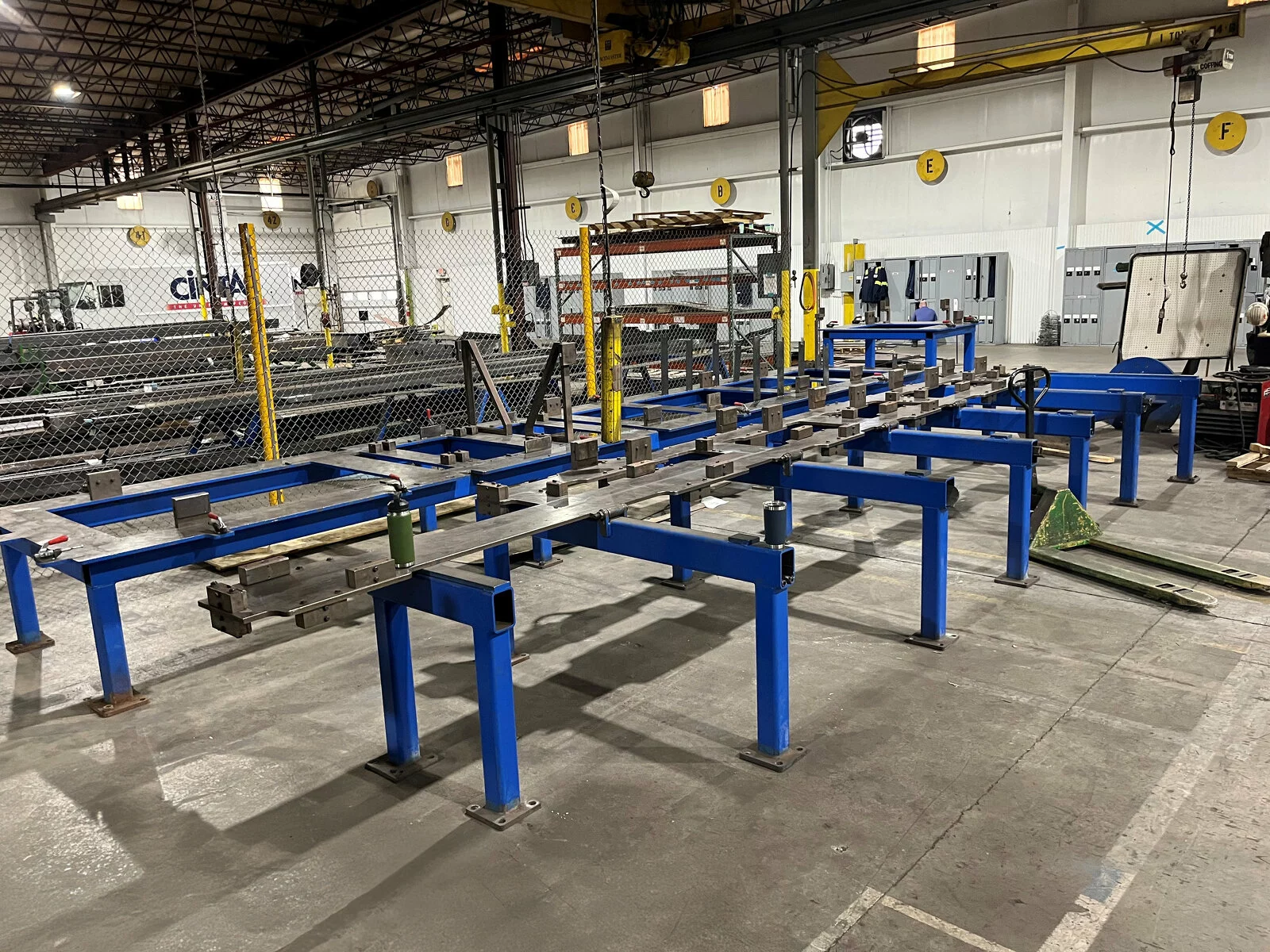
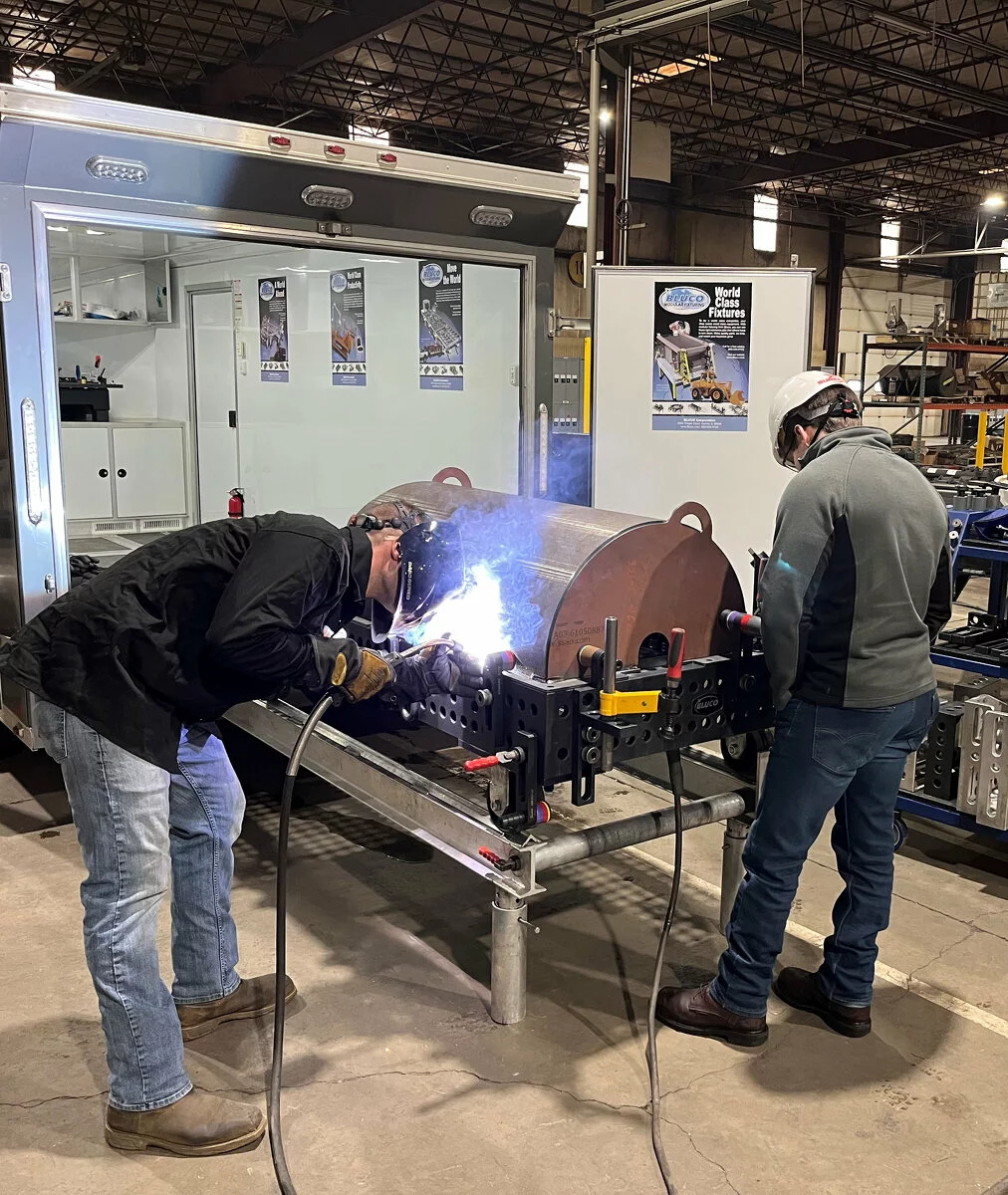
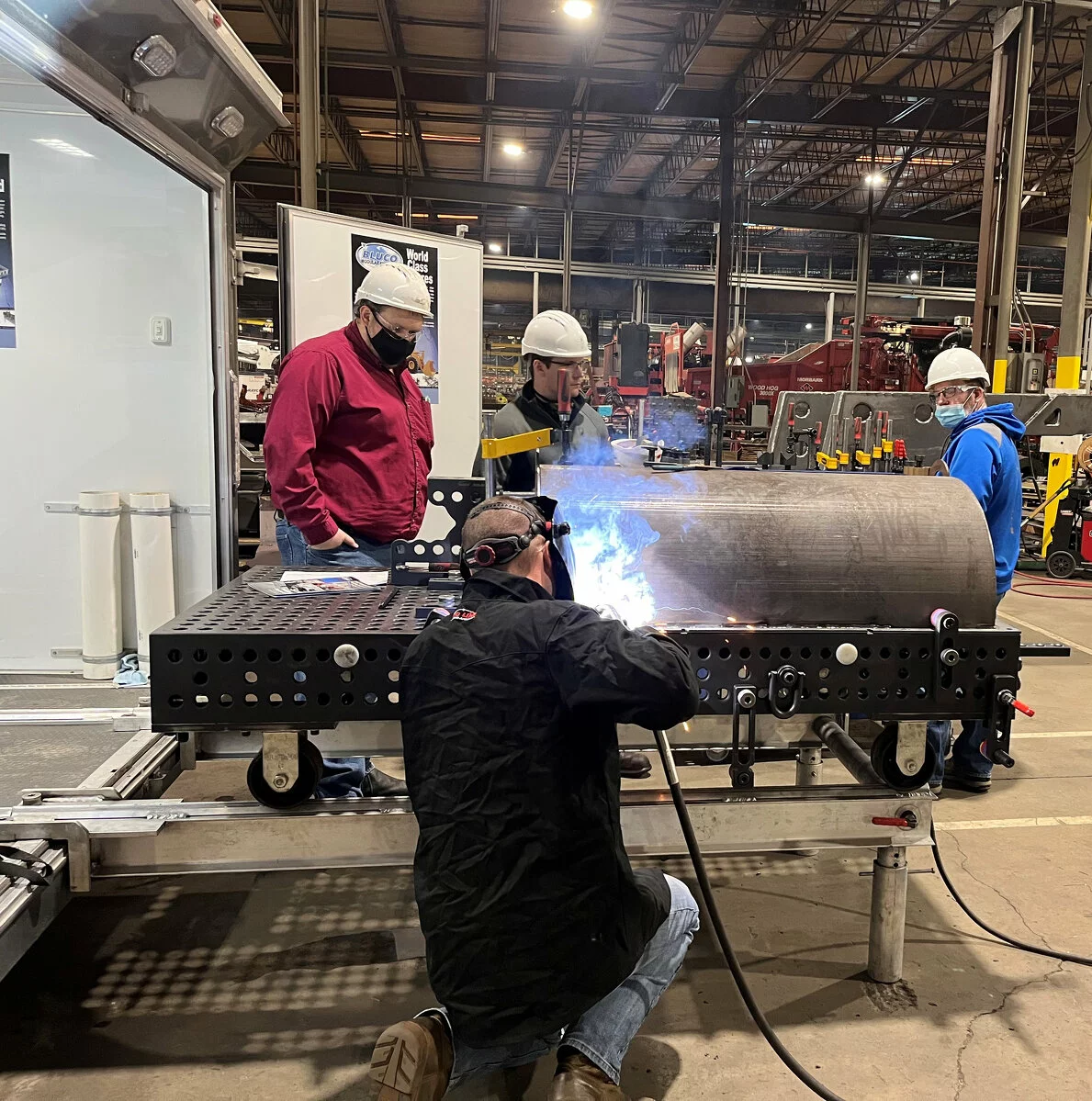
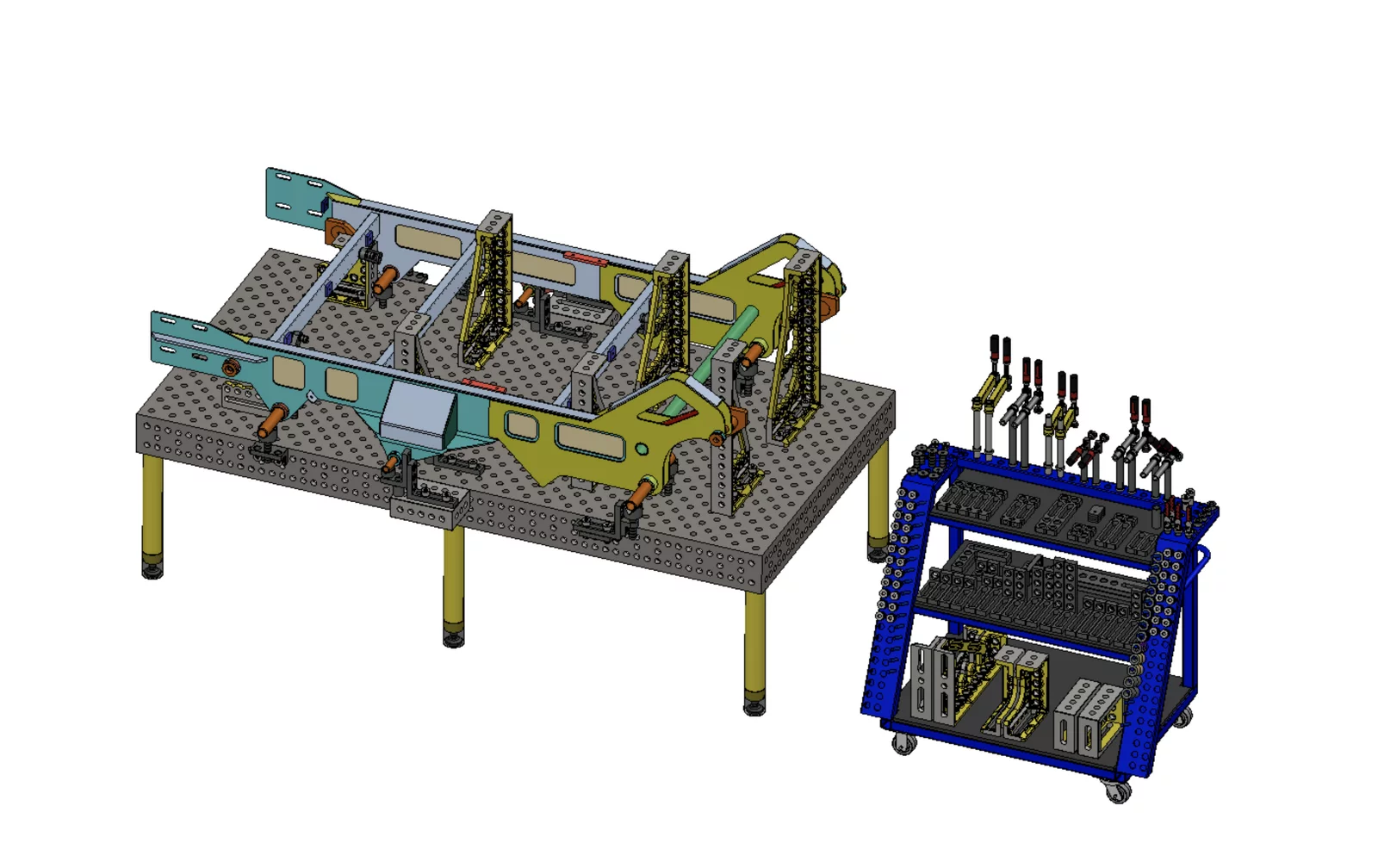
Morbark was founded in 1957 by Norval K. “Nub” Morey when he secured the patent for the Log Debarker Apparatus and opened the doors to the Morbark Portable Debarker Company. Today, the company has grown to over 500 staff and dozens of products that chip, shred, and grind organic and wood waste into merchantable products. Yet despite this growth, Morbark’s team faced an issue familiar to many manufacturers: less-than-optimal work-holding methods that left a critical gap in an optimized production process.
It was clear to Welding Engineer Brad Freiberg and the rest of the Morbark team that something needed to change. Their old dedicated fixtures were just no match for a rapidly evolving product line, and they could not deliver the efficiency & adaptability required by recently added robotic automation.
“We built a lot of our own fixturing,” says Freiberg. Because of Morbark’s high mix and low volume environment, house-made dedicated fixtures had once been practical. But now, that approach had run its course. “The fixtures became out of date due to product revisions, but the biggest issue was how fast they wore out,” he says. Morbark’s chippers weigh anywhere from 35 to just under 50 tons. The weight of those parts took a toll on their homemade fixtures. “We needed something more robust,” adds Freiberg. The question was, what was the solution, and who could provide it? The answer would eventually change Morbark’s production philosophy.
A recommendation leads to Bluco modular
With multiple robots already in place, and without the workholding expertise they needed, they reached out to several integrators for a solution. But the exact nature of their problem turned out to be a problem in and of itself.
For the integrators, the fact that the automation was already in place made the project less than ideal. For Morbark, without the volume to justify custom-dedicated fixturing, this just wasn’t the right fit. And while they still sought the end-to-end system integration, process consulting, and customization that led them down this path, their other requirements were outside the scope of typical integrator offerings. Their desire to focus on workholding and enhance their flexibility, efficiency, and production consistency meant they’d have to go a different direction.
Given their needs, one integrator suggested they contact Bluco. This idea immediately resonated with Freiberg. “I used Bluco in college. It was really impressive. So I was familiar with it and I thought, what a great idea,” he says. “You can change it, you can do whatever you want with it, and it’s robust.” Bluco checked all the boxes, so Freiberg contacted an application engineer and shared CAD models for an upcoming project. Soon after, Bluco’s team stocked the demo trailer accordingly, and headed to Morbark’s Michigan headquarters.
Seeing is believing
Freiberg and his team worked with a Bluco application engineer to complete several weldments on the table and kit from the trailer. The experience validated Freiberg’s initial instincts. “I knew this was the right way to go for a company like this. We have a lot of part versions for our equipment and our volumes are constantly changing. So, in my mind, Bluco was a great fit because it’s highly versatile,” he says.
Brian Blackmer, then Morbark’s Purchasing Manager, agreed. He’s since become the Strategic Sourcing Manager of Morbark’s parent company, Alamo Group, but remembers that initial experience well. “We were tack welding aluminum parts,” says Blackmer. “They literally wheeled it off the trailer, set it on the floor, and we sent a purchase order the same day.”
This initial solution was a relatively small investment. Still, Freiberg and Blackmer used it as an opportunity to gather valuable information — they wanted to see how the team used the modular system before investing in the more extensive solutions that were most needed. They knew the new system would represent a change from their traditional coach-built methods.
“We had some guys that had been there for a long time that always used the handmade fixturing with tape measures and string lines,” says Blackmer. While the team was wary initially, “After we worked with them for a few days, it became less intimidating,” adds Freiberg. “The turn around time for learning was pretty quick.” Even better, “The modular system eliminates the guesswork. Before, when they had to build their assemblies, they had to do corner squaring, leveling and a lot of tedious checking and measuring,” says Freiberg. The modular system eliminated all of that.
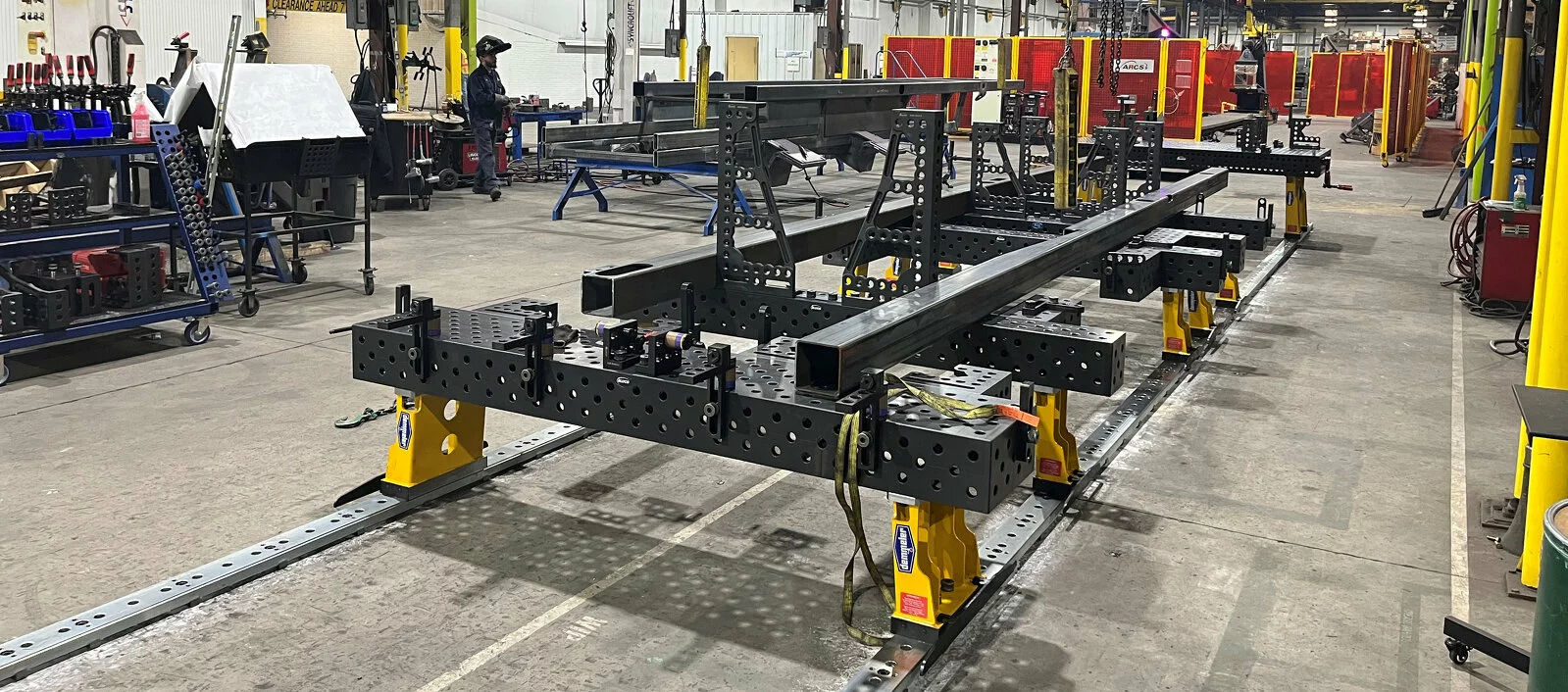
Bridging the gaps
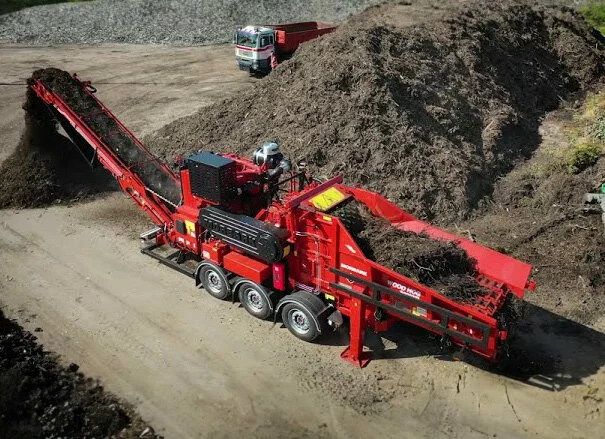
With their first modular experience under their belts, the team was ready to collaborate with Bluco to apply modular solutions to other process and production gaps. They started by tackling a nagging issue. “We needed more part consistency for the bumper assemblies on our Wood Hog horizontal grinding machines. Those bumpers carry the conveyor, and it’s important for it o fold properly,” says Freiberg. Even small variations complicated assembly and added time to the process.
“So we decided to build them on the Bluco table. We had great success with that. We found out we were able to build them and they would bolt right up to the machine,” he says.
Now that they were on a modular roll, it was time to think bigger. Next on the priority list was an upgrade to a large, outdated welding fixture. It had been designed to build one of Morbark’s two 3000 series Wood Hogs. The original fixture could only handle one model, so its performance fell short, and inconsistencies were causing delays at the robotic welding cell, the next step in the fabrication process.
“We wanted something to increase our throughput, part quality and repeatability, and that would also allow us to run both the 3000 and the 3400 Wood Hogs on it,” says Freiberg.
The answer was a modular rail system with rolling U-forms that allowed tables to be re-positioned to handle both models. Better yet, they could weld sub-assemblies AND the final marriage on the same fixture. Plus, the open design would let workers move through it rather than having to walk around it — another bonus for overall efficiency.
Results
1.5X FASTER
Higher Part Quality
More Consistency
Easy Repeatability
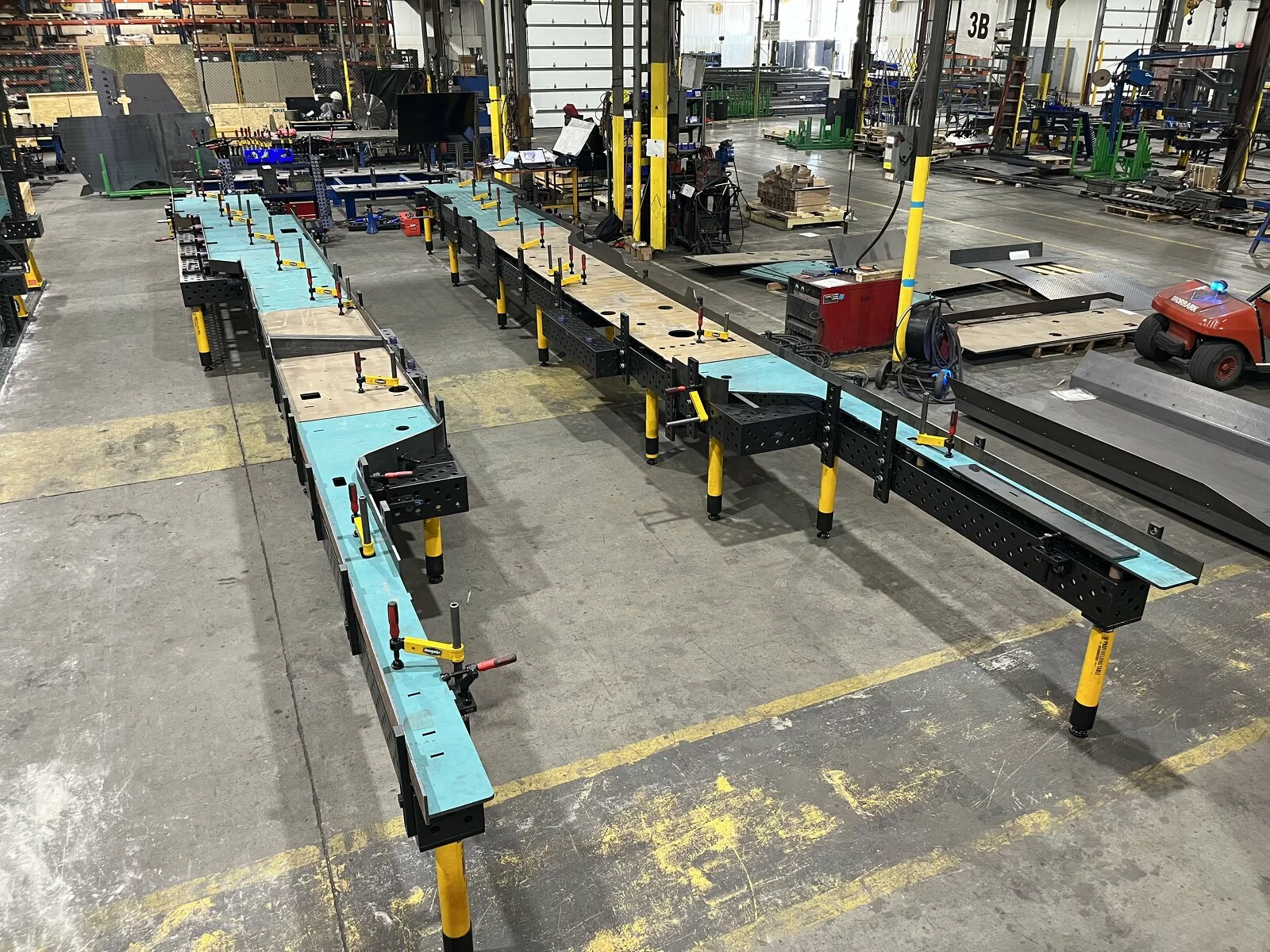
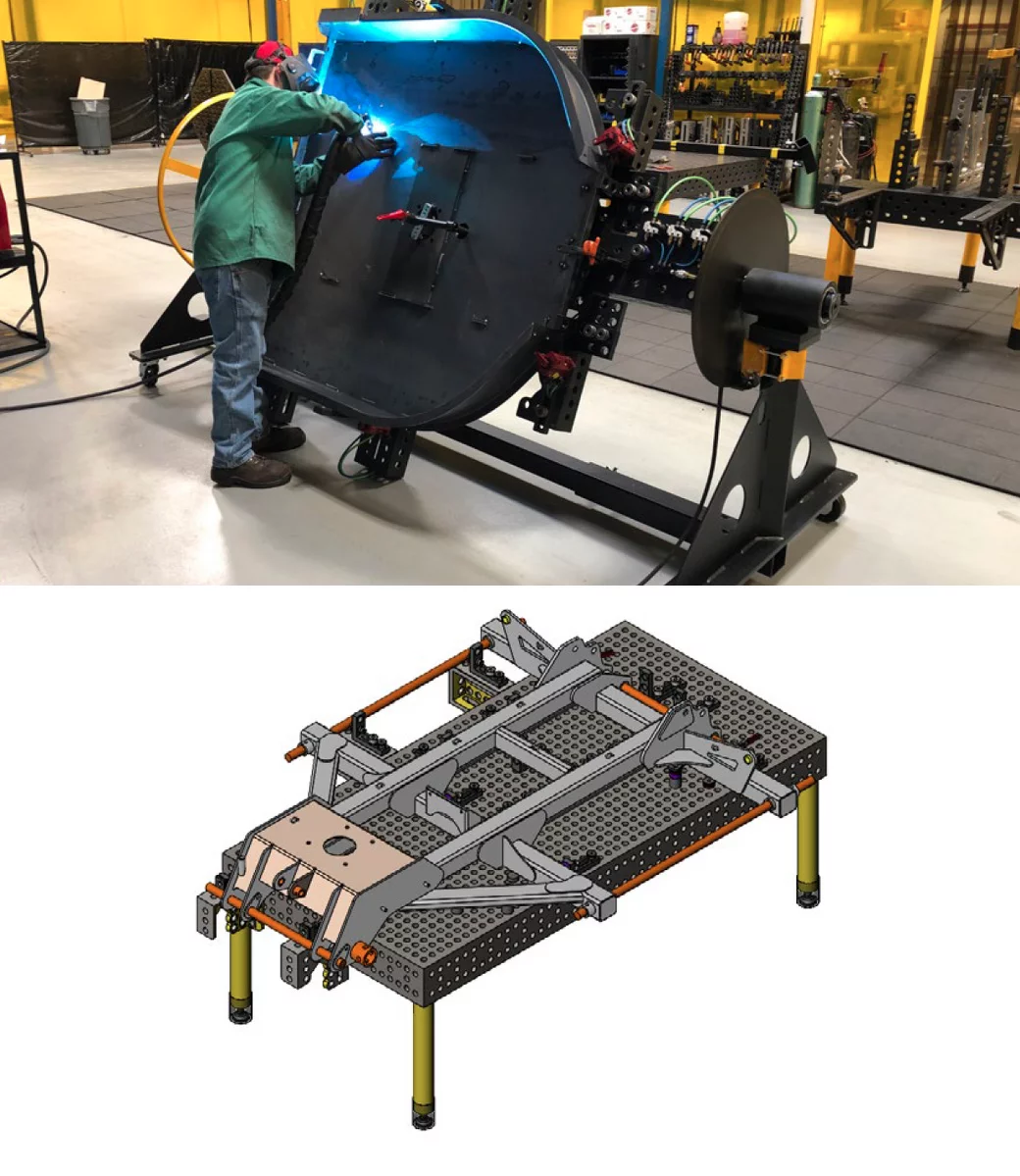
33% Time savings, easier labor allocation
The results were exactly what Freiberg was hoping for. “We were able to take out an hour of fabrication time, and our repeatability for the robot increased,” he says. For Morbark that hour represents a 33% time savings. “Overall, we got higher quality, more throughput, and consistency.”
This consistency proved to be pivotal. “With the old way, there were a thousand different ways to build it,” says Freiberg. Because of that, there seemed to be a thousand differences in the final parts themselves. “Before, there was no part consistency at the back end. But now, we’re able to make work instructions to set up the tables a specific way to build a specific part,” he adds.
Looking back on the beginning of their modular journey, Freiberg is pleased with where it’s led them. “The first rail system was an investment that took a lot of consideration,” he says. “But the ROI speaks for itself.”
Freiberg isn’t the only one who feels that way. “There’s a management team in place that now believes too,” says Blackmer. “Sales wants to sell more. And you can sell more by putting more out the door. These types of solutions do that. So management has bought in over time.”
Duplicating a formula for success
Morbark is one of over 20 facilities in the United States owned by Alamo Group. While they produce diverse products — everything from street sweepers and snow plows to agricultural and forestry equipment — their desire to get higher quality products to market faster is universal.
So once Bluco helped Morbark bridge the gaps that were holding them back, other brand names under the Alamo umbrella began to follow suit. However, their reasons for choosing Bluco were not just about profits and revenue.
“In a purchasing world, you look at the total cost of ownership. But for me,” says Blackmer, “it’s also about some things you can’t quantify on a spreadsheet. The fact that you were able to put in a process that provides repeatability, and the way Bluco relates to guys on the floor. They get everyone together to show them the solution and get them to believe in it. Just taking the team from simple tack-on fixtures that were not repeatable to something that is now very repeatable. It was a big thing. There’s real value there.”
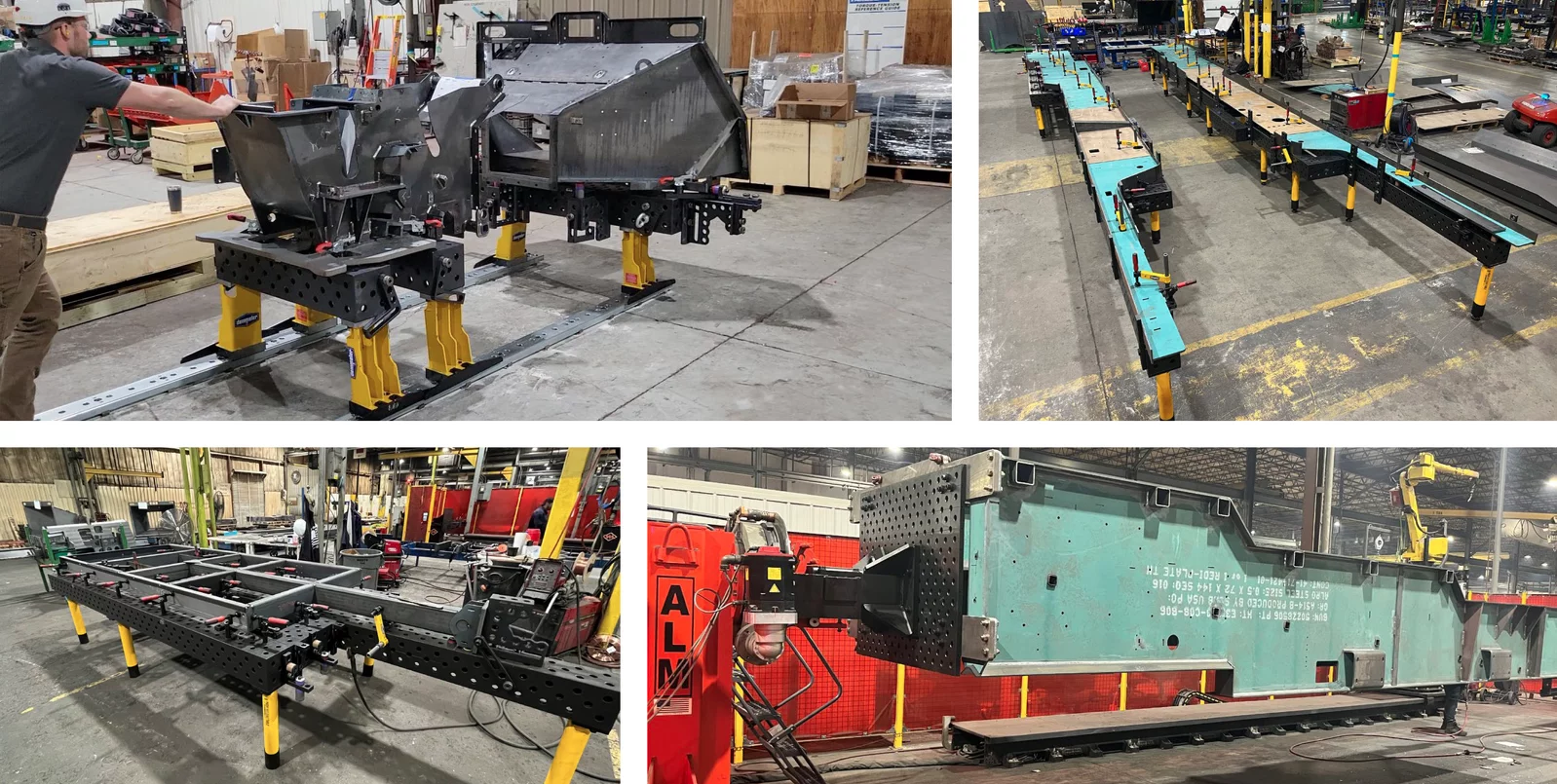
CONSISTENCY
REPEATABILITY
EASE OF USE
“With the old way of building, there were a thousand different ways to build it. That greatly reduced part consistency at the back end.” – Brad Freiberg, Welding Engineer
“...Bluco relates to guys on the floor. They get everyone together to show them the solution and get them to believe in it. Just taking the team from simple tack-on fixtures that were not repeatable to something that is now very repeatable. It was a big thing.” – Brian Blackmer, Strategic Sourcing Manager
“Before, when they [Morbark’s team] had to build their assemblies, they had to do corner squaring, leveling and a lot of tedious checking and measuring. The Bluco table takes a lot of that out of it, which they really like." – Brad Freiberg, Welding Engineer

Discover Bluprint™
Proposals only show how much it will cost. BluPrint proves how much you can gain.
